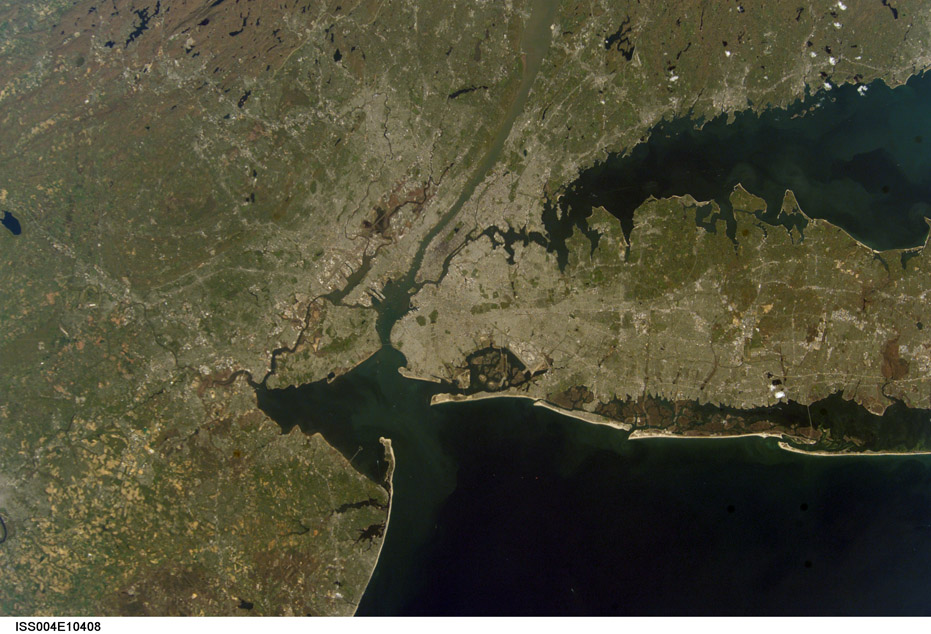
ISS004-E-10408. Raritan Bay Surrounded by New Jersey and New York with Connecticut. Image courtesy of the Image Science & Analysis Laboratory, NASA Johnson Space Center.
Since the first person went there on 12 April 1961, thus far only about 450 people have been in space. The space based photos of the Morgan, NJ area featured in this posting were taken by a few of those 450 people. Morgan, NJ is located at the southwestern point of Raritan Bay, south of the Raritan River and north of Cheesequake Creek.

ISS006-E-37526. Raritan Bay Surrounded by New Jersey and New York with Connecticut at Night. Image courtesy of the Image Science & Analysis Laboratory, NASA Johnson Space Center.
These photos vary in altitude and times of the year. Not all have north at the top of the frame. Most show all of Raritan Bay and Staten Island and many show other near by states (New York, Pennsylvania, Connecticut, Rhode Island and Massachusetts). All these photos were taken by astronauts while on the International Space Station. NASA’s web site also features some photos taken on the Space Shuttle. I’m a little partial to the now retired Space Shuttle as that was the first aerospace system I worked on after graduating from Rutgers.
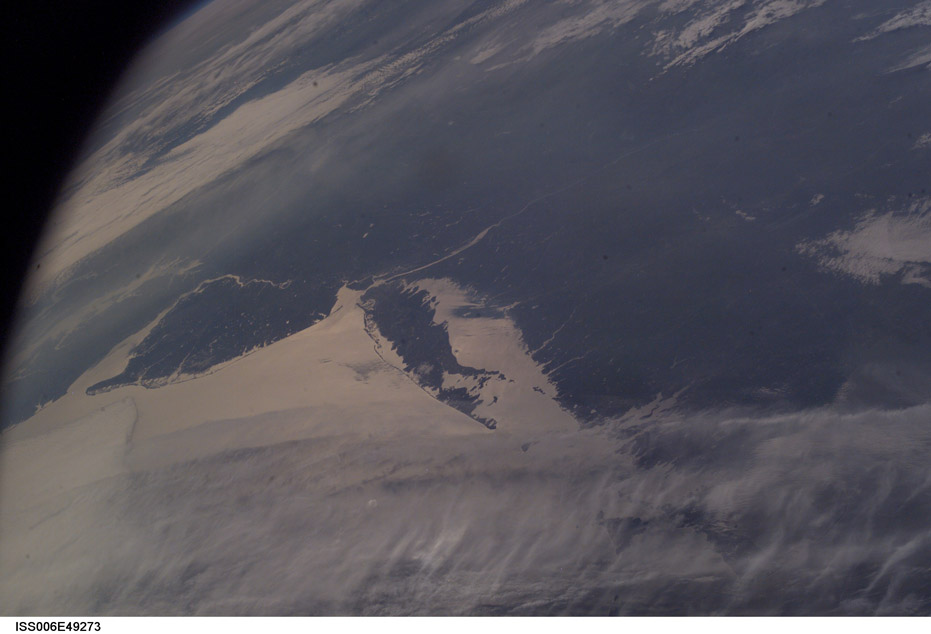
ISS006-E-49273. Looking Westward over Massachusetts, Rhode Island, New York, New Jersey, Delaware, and Maryland. Raritan Bay is Clearly Seen to the West of Long Island. Also Clearly Seen are: Chesapeake Bay, Delaware Bay, Delaware River, Hudson River, Long Island Sound, and Narragansett Bay. Image courtesy of the Image Science & Analysis Laboratory, NASA Johnson Space Center.
While it isn’t inexpensive enough at the time of this writing for regular people to take trips into space, the time will come, perhaps before this decade is out (catchy quote), that taking a suborbital ride into space will be an affordable option for middle class family. If that does come to be a reality, we can all thank those “Early Adopters” who made possible so many things we regular people were able to eventually afford. They buy products or services when they are new concepts and very expensive thus allowing for the product or service providing company to recoup some early research and development costs. They also provide early feedback which help make the products better. Among the products Early Adopters have helped provide for the rest of us include automobiles in the days of the horse and buggy, airline travel, personal computers, personal GPS devices, and digital wide screen televisions.
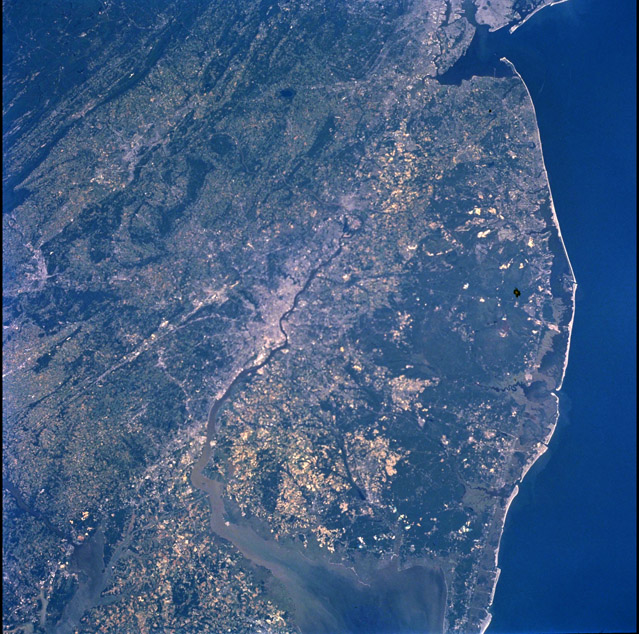
ISS002-708-31. Primarily Pennsylvania and New Jersey with Northern Delaware and Northern Maryland. Image courtesy of the Image Science & Analysis Laboratory, NASA Johnson Space Center.
The first company which appears to be close to offering sub-orbital, and eventually orbital, trips to space is Virgin Galactic. Virgin Galactic, part of Sir Richard Branson’s Virgin Group (Virgin Atlantic Airways, Virgin Records, Virgin Megastores, etc.), is finishing the development phase of its space transportation system composed of SpaceShipTwo, a space craft designed to carry six passengers and two pilots, and WhiteKnightTwo, the ferry ship which will transport SpaceShipTwo to an altitude of 50,000 feet. At this altitude, SpaceShipTwo will detach, ignite its rocket engine, travel at 2,500 miles per hour and climb to the sub-orbital altitude of 68 miles (international agreement defines “Space” as starting at 62.1 miles). The trip will originate and return safely to earth (another catchy phrase) at Virgin’s Spaceport America location in New Mexico. The whole trip will be about 2.5 hours – all for only $200,000 – per person.
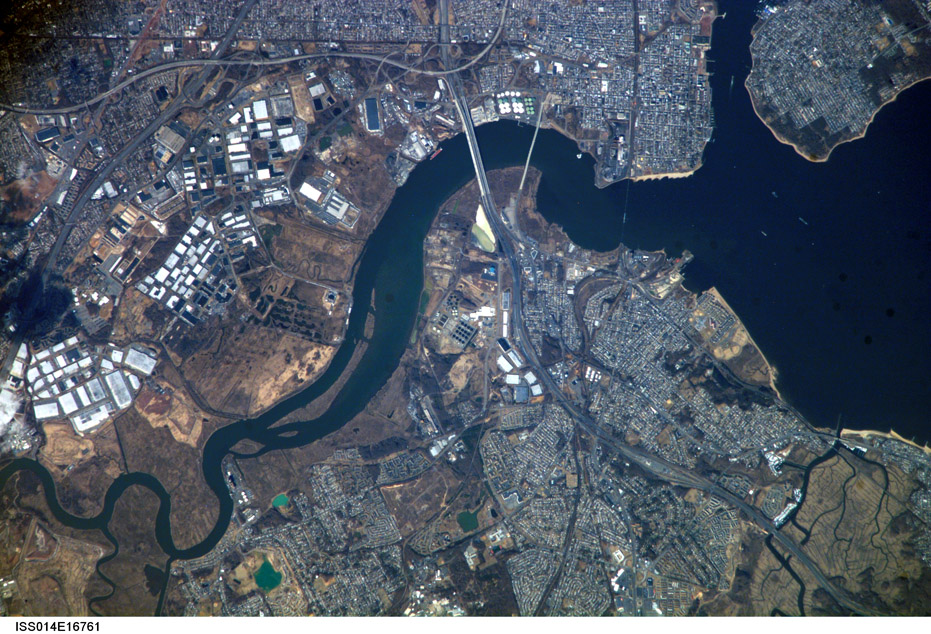
ISS014-E-16761. Raritan River, Raritan Bay, and Arthur Kill. New Jersey: Sayreville (with Morgan), Laurence Harbor, Madison Park, South Amboy, Perth Amboy, Woodbridge, Fords, and Staten Island, New York. Image courtesy of the Image Science & Analysis Laboratory, NASA Johnson Space Center.
In June 2013, Sir Richard Branson announced that the first Virgin Galactic flights with paying passengers will begin in December 2013. Within two years, he announced that over 600 people will have flown – many more than have sojourned into space to date. There is said to already be hundreds of people on the waiting list including, reportedly, William Shatner who played Captain Kirk in the original Star Trek TV series.
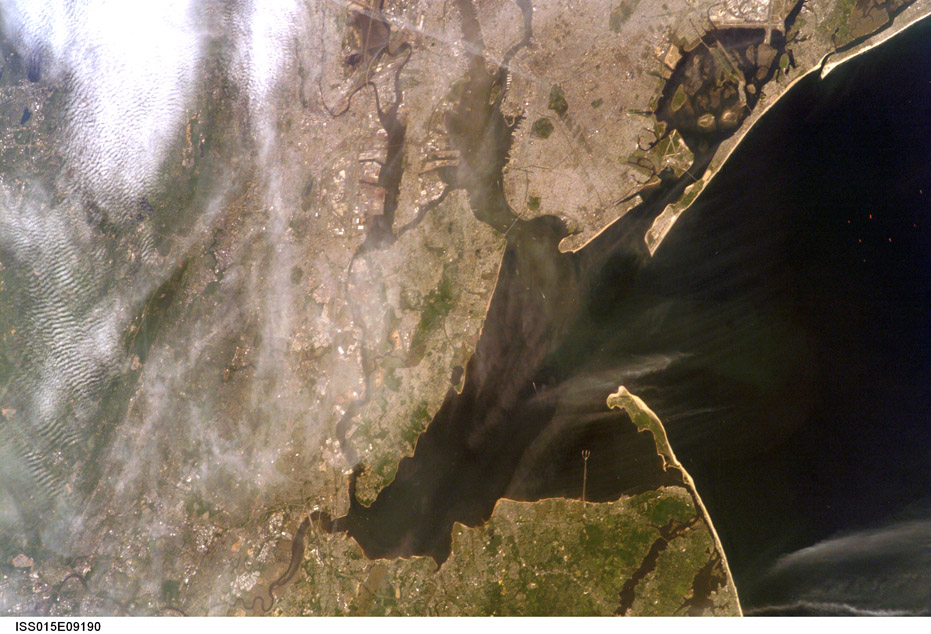
ISS015-E-9190. Raritan Bay with the 2.9 Mile Long Trident Shaped Pier at Naval Weapons Station Earle. Image courtesy of the Image Science & Analysis Laboratory, NASA Johnson Space Center.
These photos, taken in orbit by astronauts using hand held cameras, were obtained from “The Gateway to Astronaut Photography of Earth” NASA web site. This site contains nearly one million images – some of them quite amazing. Poke around the web site – especially using the “Collections” button. Should you be interested in obtaining a complete image of one of the images shown on this Morgan-NJ.org posting which makes it possible to zoom in with less distortion, perform the following steps:
- Go to http://eol.jsc.nasa.gov/sseop/mrf.htm.
- In the big white box on the right under “(If anything is entered here, then this search will be used rather than the one to the left.)”, type in the image number of the image you want to obtain, e.g., “ISS004-E-10408”.
- Scroll to the bottom of the web page and click on the “Run Query” button.
- On the “Database Search Results” page to the left of the entry for the photo, click on the purple “Quick View” box.
- In the new window, scroll down and under the image, click on “See all metadata, images and captions.”
- In the new window, scroll down under the image, Under “Large Images to Request for Downloading” on the left of the entry for the photo, click on the “Request” box.
- Yet another “The Gateway to Astronaut Photography of Earth” window will pop up which will provide “How to retrieve” information. In item 1 under “Using a web browser”, click on the link which starts with “ftp://eol.jsc.nasa.gov/” and contains the image name followed by “.JPG”.
- At this point, a request for the photo has been made to some computer at NASA to retrieve the image from the photo database and provide it to you in yet another pop up window. This may take a few minutes.
- In this final window, if you do not see the photo, wait a few minutes and hit the refresh button in your browser. Repeat until you see the photo. When you do see the photo, go to the “File” menu and select “Save As…” to save the file to a location of your choice.
- ISS003-E-5388. September 11, 2001 Image of Raritan Bay Showing the World Trade Center Plume of Smoke Following the Terrorist Attack. Image courtesy of the Image Science & Analysis Laboratory, NASA Johnson Space Center.
Originally posted on January 24, 2010.
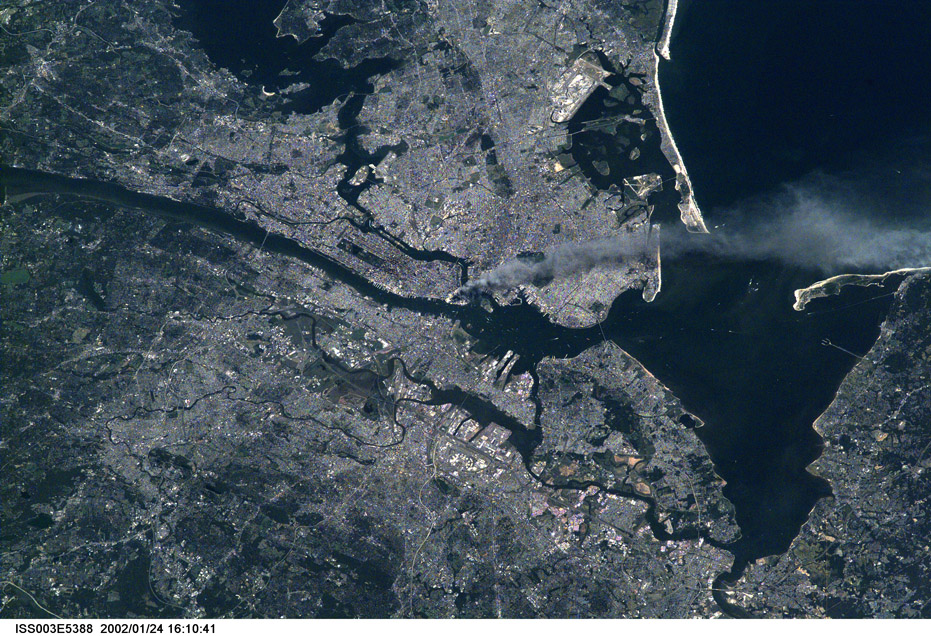
WOW, tha last pic of the WTC plume from space was powerful, more interesting was the closings of all Bridges and tunnels and roadways in areas, I went to the OUTERBRIDGE CROSSING with friends to check on buddy and they had a Medivac heliocopter landed on the east bound lanes of route 440 (closed!!)at the entrance of the Outerbridge Crossing, plus at 6pm or so a few C-130’s came in low over Amboy and then flew over Staten Island direct tot he WTC Site plume………..never forget that SIGHT!!!!!!
Updated Links:
https://eol.jsc.nasa.gov/
https://eol.jsc.nasa.gov/SearchPhotos/photo.pl?mission=ISS004&roll=E&frame=10408